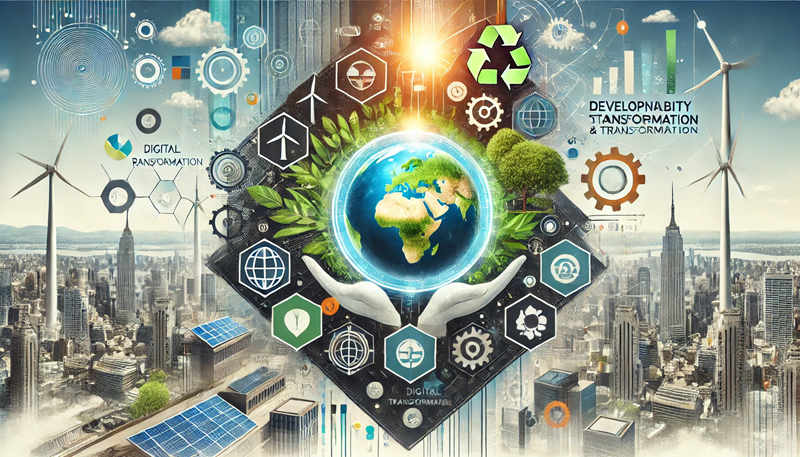The need for sustainability in business is no longer optional—it’s a critical part of ensuring long-term success in a rapidly changing world. Organizations that embrace sustainability alongside transformation gain competitive advantages, improve stakeholder trust, and contribute positively to global environmental and social goals. This guide explores the top 10 steps to develop an effective sustainability and transformation plan for your organization.
1. Understand Sustainability and Transformation Goals
Before developing a plan, it’s essential to define what sustainability and transformation mean for your organization. Sustainability typically focuses on environmental, social, and governance (ESG) objectives, while transformation encompasses strategic changes to adapt and thrive in dynamic markets. By aligning these goals, your organization can create a unified vision that balances profitability with responsibility.
2. Conduct a Sustainability Assessment
The first actionable step is to assess your organization’s current sustainability performance. Evaluate energy consumption, carbon footprint, waste management, and supply chain practices. This baseline assessment helps identify strengths and areas for improvement, setting the stage for targeted initiatives.
Trending Practice: Use tools like ESG scorecards and carbon calculators to measure environmental impact and track progress.
3. Engage Stakeholders Early
Sustainability and transformation require buy-in from employees, customers, investors, and other stakeholders. Engaging these groups early ensures their support and fosters collaboration.
Strategies for Engagement
- Host workshops and discussions to gather input on priorities.
- Share the organization’s vision and goals transparently.
- Establish a sustainability committee to oversee initiatives.
4. Set Clear and Measurable Goals
Setting specific, measurable, achievable, relevant, and time-bound (SMART) goals is crucial. These goals provide direction and help track progress over time. For example:
- Reduce greenhouse gas emissions by 30% within five years.
- Achieve 100% renewable energy usage by 2030.
Example: IKEA’s goal to become climate-positive by 2030 demonstrates how ambitious, clear targets drive transformation.
5. Integrate Sustainability into the Core Business Strategy
Sustainability should not be a standalone initiative; it must be embedded into your core business strategy. This ensures alignment with organizational goals and makes sustainability a natural part of decision-making processes.
Key Areas to Focus On
- Product design and innovation.
- Ethical sourcing and supply chain management.
- Energy-efficient operations.
6. Leverage Technology for Sustainable Transformation
Technology is a key enabler of sustainable transformation. From data analytics to renewable energy systems, technology drives efficiency, reduces waste, and fosters innovation.
Applications of Technology
- AI and IoT: Optimize resource usage and monitor emissions.
- Blockchain: Enhance supply chain transparency and ethical sourcing.
- Energy Management Systems: Track and reduce energy consumption.
7. Build a Sustainable Supply Chain
Your supply chain has a significant impact on your sustainability goals. Building a green and resilient supply chain involves evaluating suppliers’ practices and aligning them with your sustainability standards.
Tips for Supply Chain Transformation
- Partner with eco-friendly suppliers.
- Incorporate circular economy principles like recycling and reuse.
- Use renewable energy in logistics and manufacturing.
8. Foster a Culture of Sustainability
An organization-wide culture of sustainability ensures that employees at all levels embrace and contribute to the plan’s success. Education and training are vital to building this culture.
Practical Actions
- Conduct sustainability workshops and training programs.
- Recognize and reward employees for sustainability initiatives.
- Encourage daily habits like recycling and energy conservation.
9. Monitor, Report, and Improve Progress
Transparency is key to maintaining accountability and demonstrating progress to stakeholders. Regularly monitor your initiatives, report results, and refine strategies as needed.
Tools for Tracking and Reporting
- Sustainability dashboards and analytics platforms.
- ESG reporting frameworks like GRI or SASB.
- Regular updates to stakeholders via sustainability reports.
10. Collaborate with Partners and Communities
Sustainability is a collective effort. Collaborating with industry partners, governments, and communities amplifies impact and fosters innovation.
Collaborative Efforts
- Join sustainability initiatives like the UN Global Compact.
- Participate in cross-industry collaborations for climate action.
- Support local community projects that align with your goals.
Building a Resilient Future
Developing a sustainability and transformation plan is not just about meeting environmental goals—it’s about building a resilient, future-ready organization. By following these 10 steps, your organization can align business success with responsibility, ensuring lasting impact for your stakeholders and the planet.
Now is the time to act. With the right plan, tools, and commitment, your organization can lead the way in sustainable transformation, setting an example for others.
